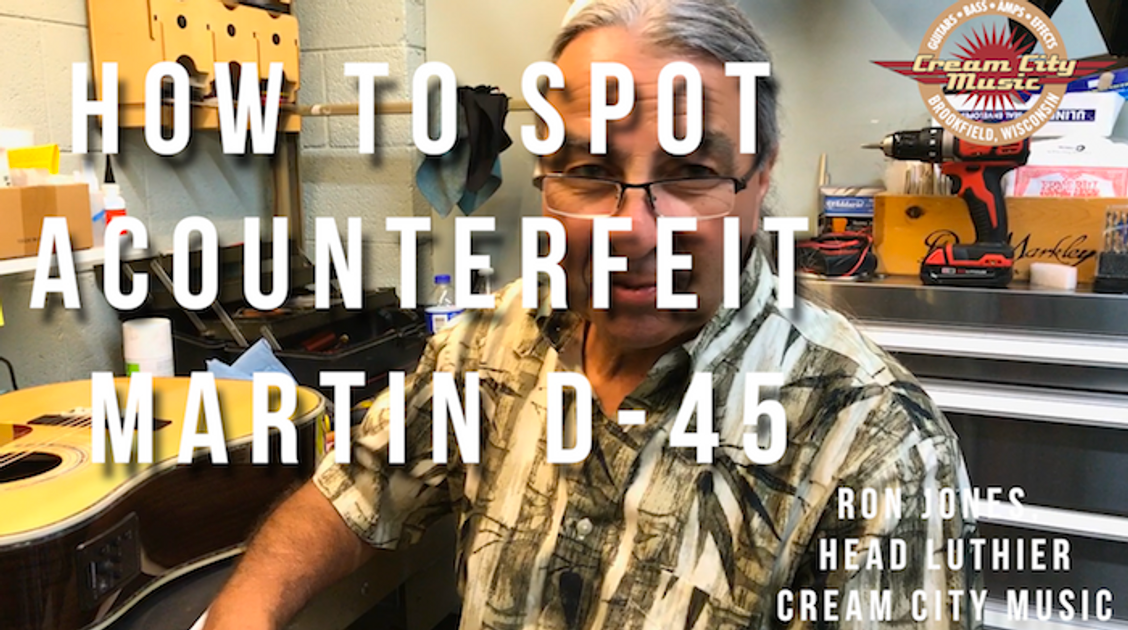How To Spot A Counterfeit Guitar: Martin D-45 Forgery vs. A Real Martin Triple O-45 with Ron Jones, Luthier
Posted by Ron Jones/Jason Klagstad (editor)
Ron Jones, master luthier at Cream City Music, has been a full time professional luthier for thirty plus years and has accumulated a large body of knowledge with regards to the repair, maintenance and upkeep of guitars of all types.
How to Spot a Fake Martin Guitar
According to Ron Jones, there are multiple key things to look for when buying Martins or other high-end acoustic guitars of any brand or model.
Finish
Uneven, too shiny finish that is showing grain lifting or grainy streaks can be key identifiers that a guitar is not from a licensed manufacture. For example, the guitar below features an uneven finish that is too glossy, while Martin finishes are typically smooth and deep looking.
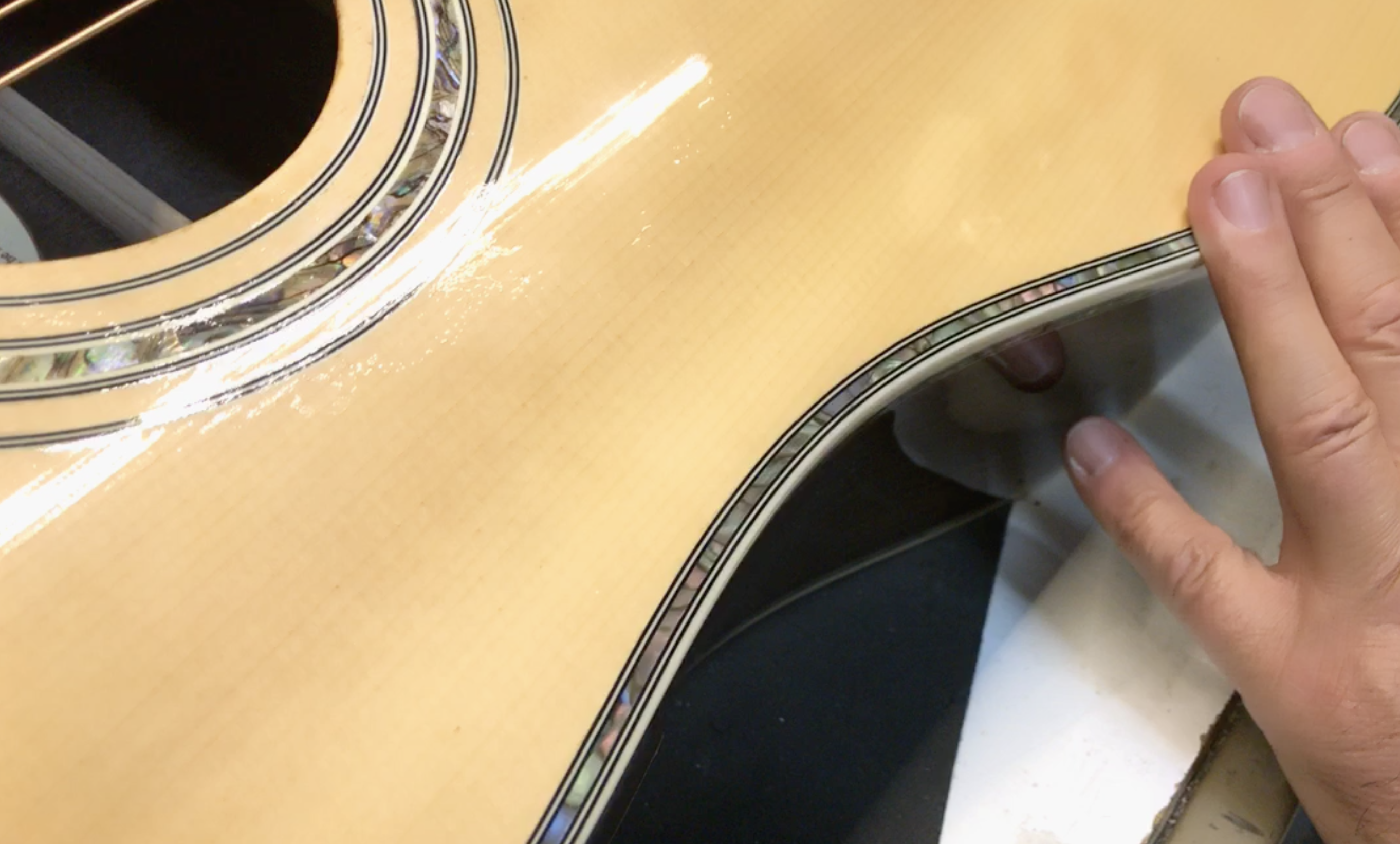
Sound-Hole
A well trained eye will also be able to identify a counterfeit based on the crafting of the sound-hole. A counterfeit guitar may have a crudely cut sound-hole, which is not created with the same amount of care and quality as a high-end guitar.
Other notable features that will help identify if your guitar is authentic are rough edges and out-of-round forms.
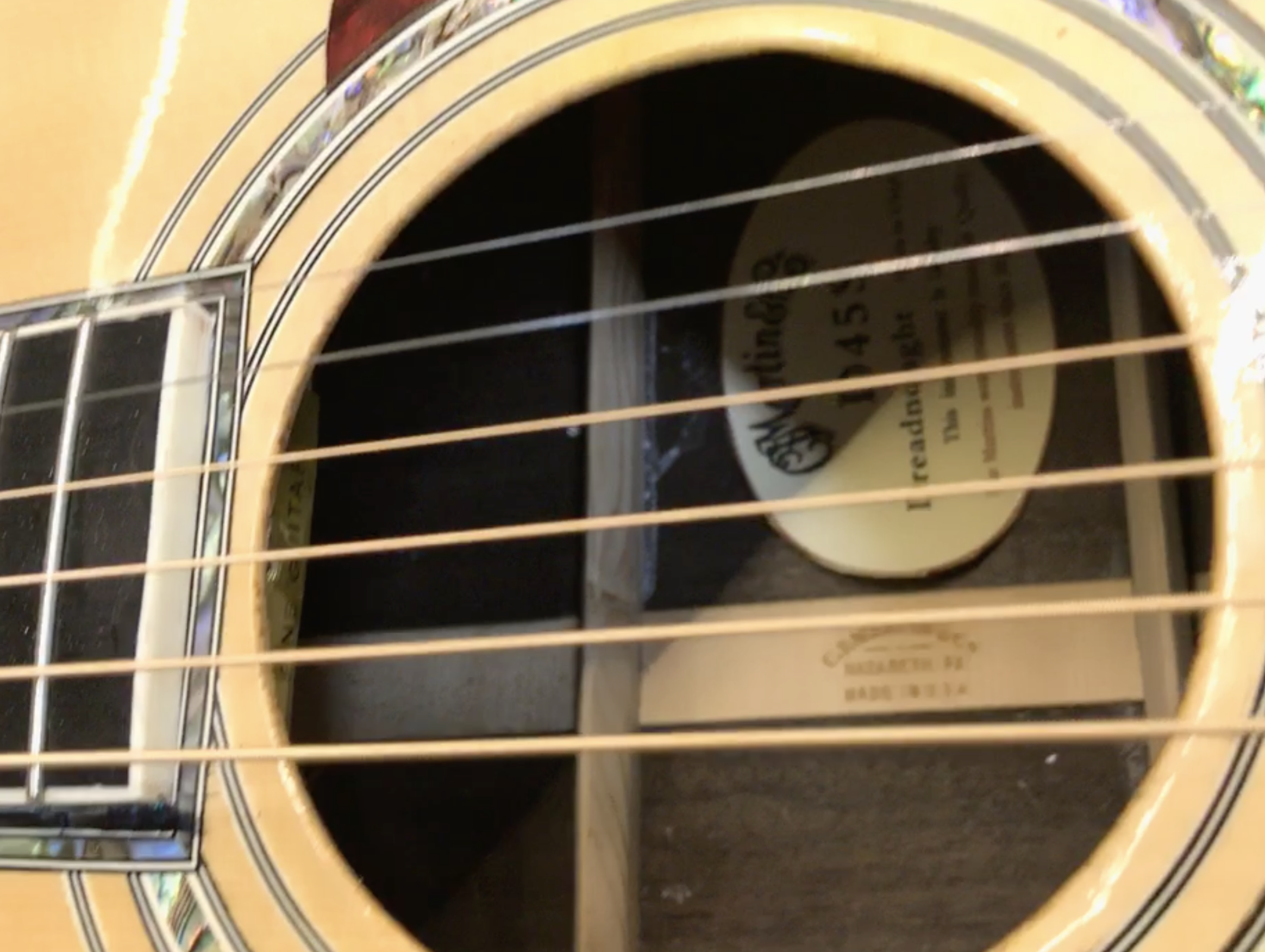
Brand Markings
Although the instrument may have a seemingly correct brand label and interior markings in the soundhole, a closer look may uncover some abnormalities. You'll most likely notice the work to be poorly and inconsistently done.
Wood
Counterfeit guitars typically make use of cheaper laminate wood. When trying to identify laminate wood, you should be able to tell by looking at the inside and then outside wood grain and color. When taking the the same spot on a guitar, the wood grain and color should be consistent. If they differ, it means the wood is a laminate, not solid.
Bridge & Bridge Plate
The look and finishings of the bridge saddle differ among guitar models and manufacturers.
When looking at our fake guitar we can see it does not fit the consistency of other models. While Martin rounds off corners and the bridge saddle fits tight, the forgery guitar has a crudely cut bridge with sharp edges. Additionally the guitar features an ill-fitting bridge saddle slot.
Additionally, authentic Martins have a solid piece of wood under the bridge. On this copy, it is a laminate. You can check this by taking a peek inside of the sound-hole.
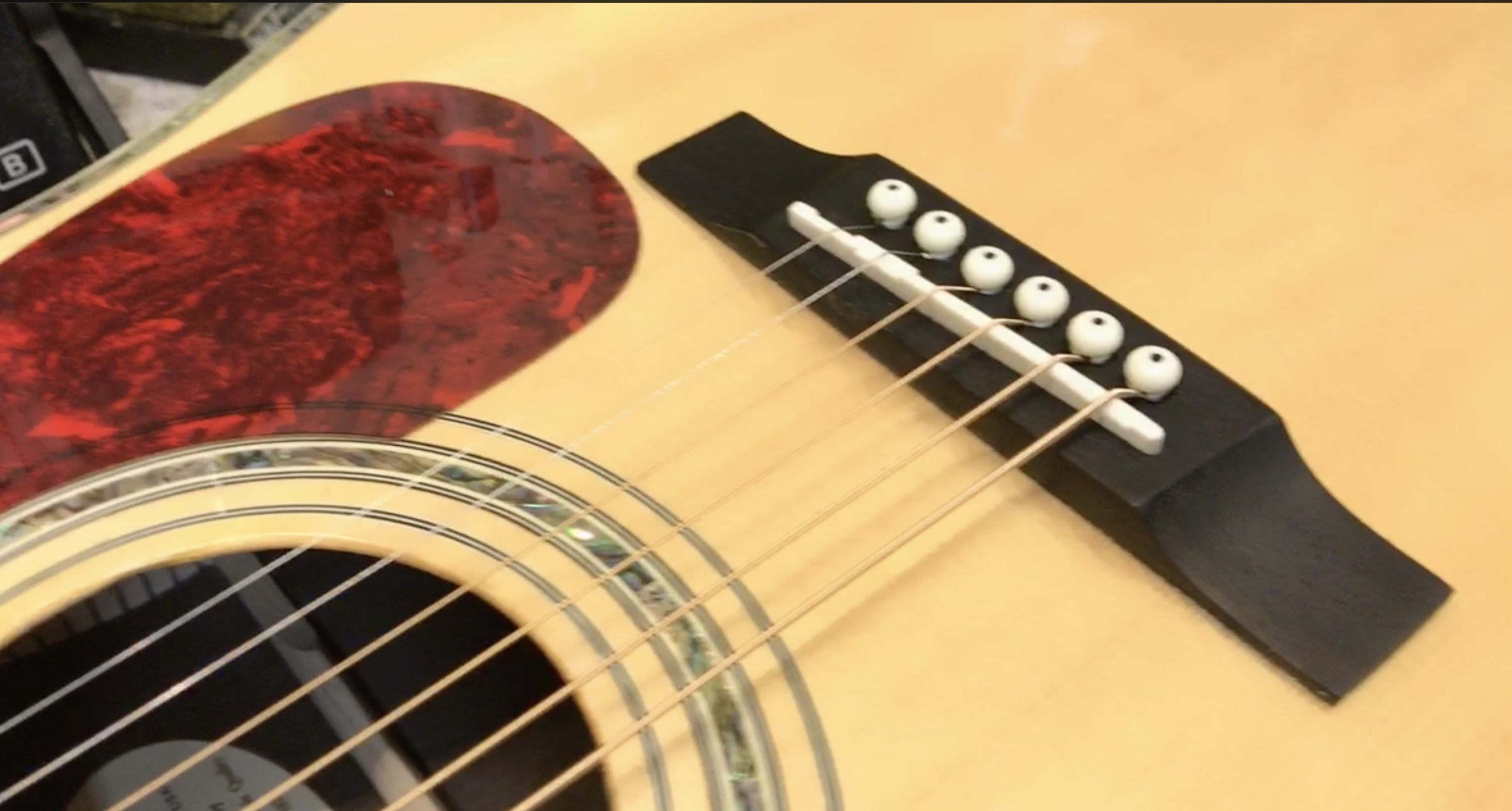
Inlay Dots
Inlay dots along the side of the neck should be evenly cut with no off colorations around each dot. This is not the case with the neck dot markers we have on the copy.
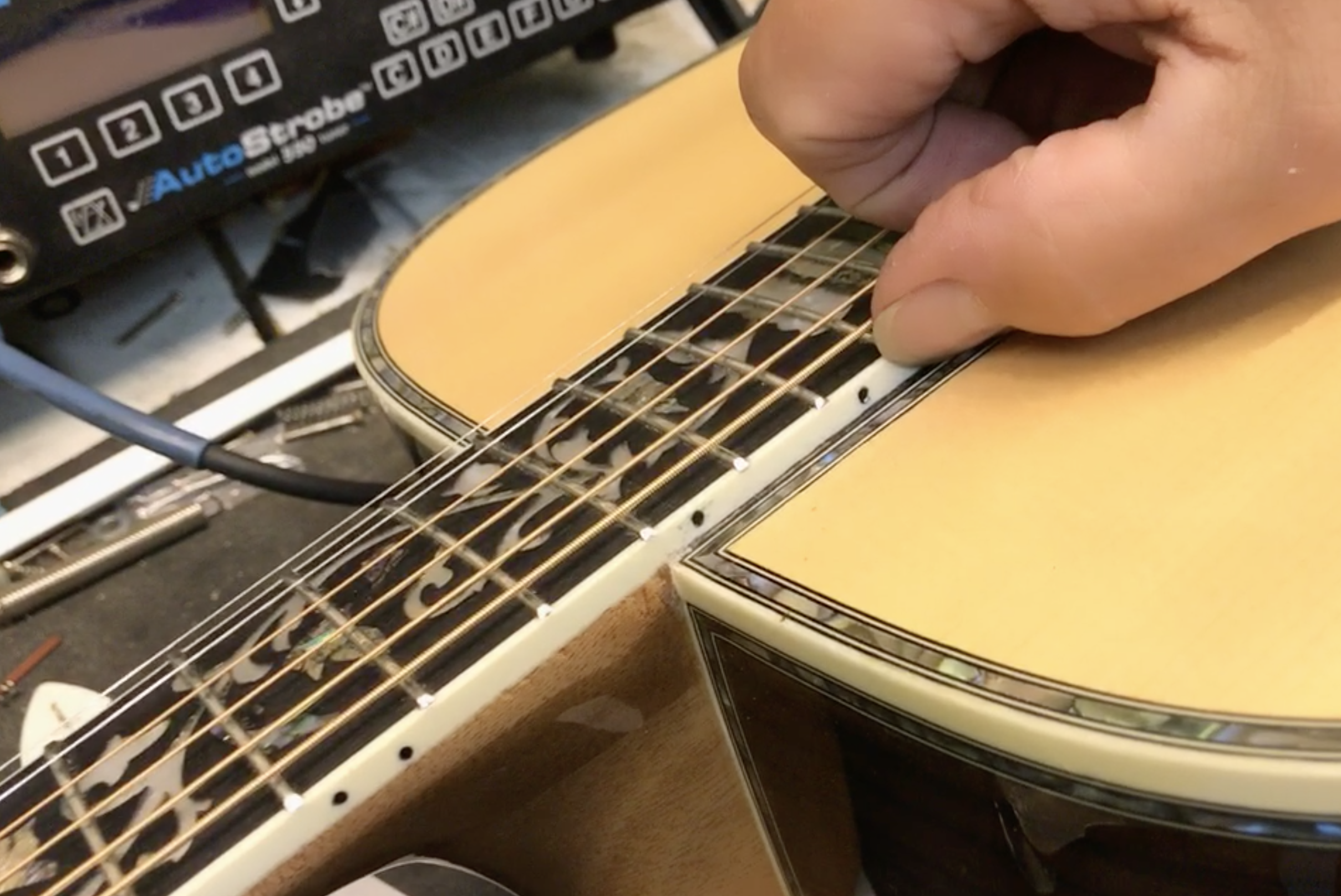
Dead Giveaways of a Counterfeit Guitar
Dead Giveaway #1: Truss adjustment is the wrong size.
In the case of the counterfeit Martin D-45, the guitar used a 4mm, while a true Martin would use a 5mm. Additionally, the truss is exposed at cross-brace, which is also not a Martin attribute.
Dead Giveaway #2: Wrong inlay for the model on the neck
Taking our counterfeit Martin as an example, the neck features a “tree of life” inlay. Real Martin D-45s do not have this “tree of life” pattern.
Additionally, the neck inlay tree of life is a combination of mother of pearl and vinyl, rather than being made purely of mother of pearl. The fake Martin features a vinyl white ‘tree’ portion of the design and then correct abalone mother of pearl only on the flower portion of the inlay.
Dead Giveaway #3: Improper neck stain color
Martin always stains the mahogany necks a darker color. Although this fake does have a mahogany neck, the maker has left the neck color much lighter.
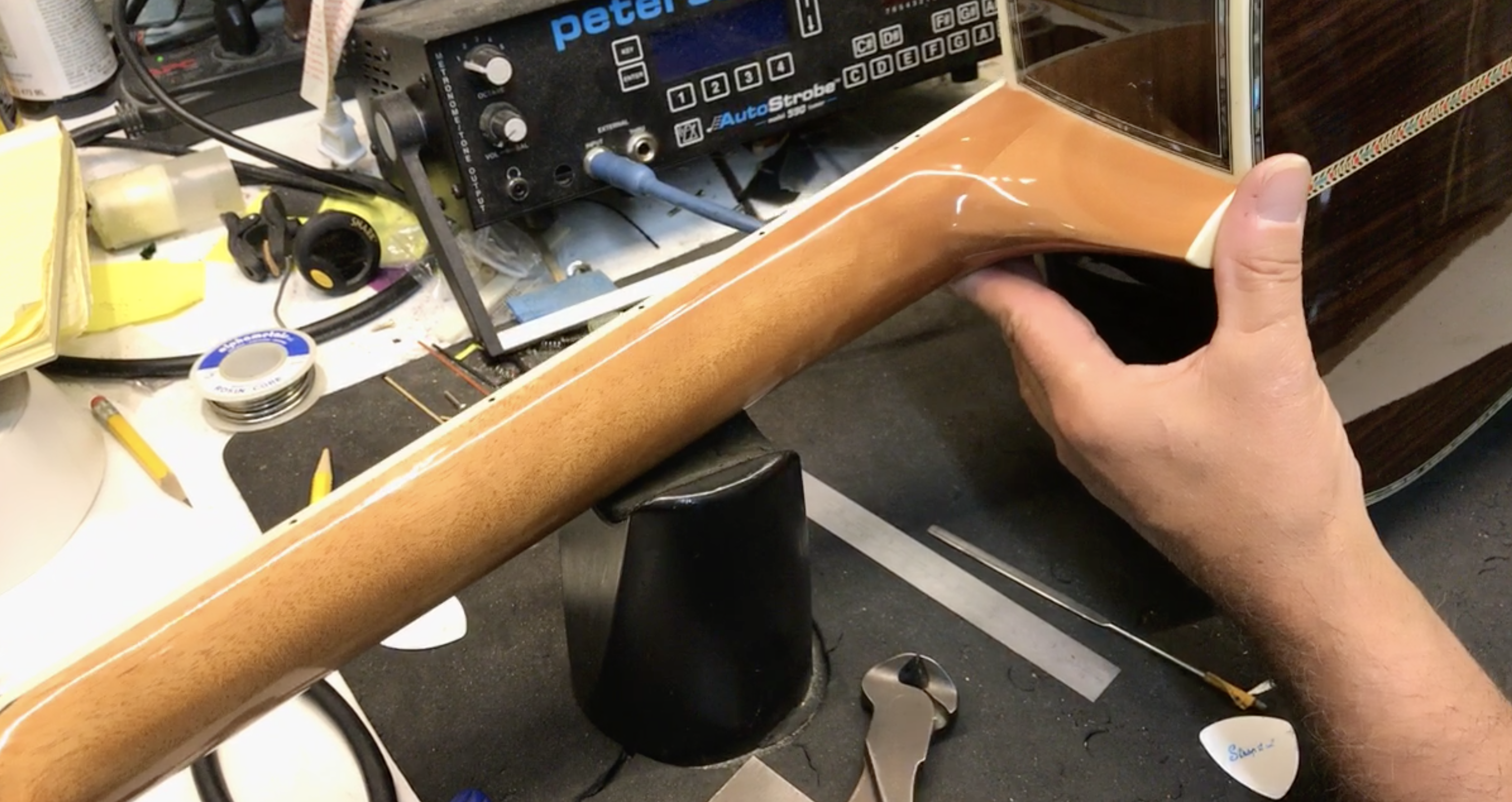
For a detailed breakdown of a counterfeit Martin guitar, check out our video below...
We hope this helps illuminate this dark corner of the guitar world. Many purchasers buy instruments sight unseen off the internet, only to be disappointed by a fake replica.
If you are in the position of buying an instrument you are not 100% sure of, please call us at 1-800-800-0087 or email service@creamcitymusic.com. We'd be happy to help vet the instrument for you.
